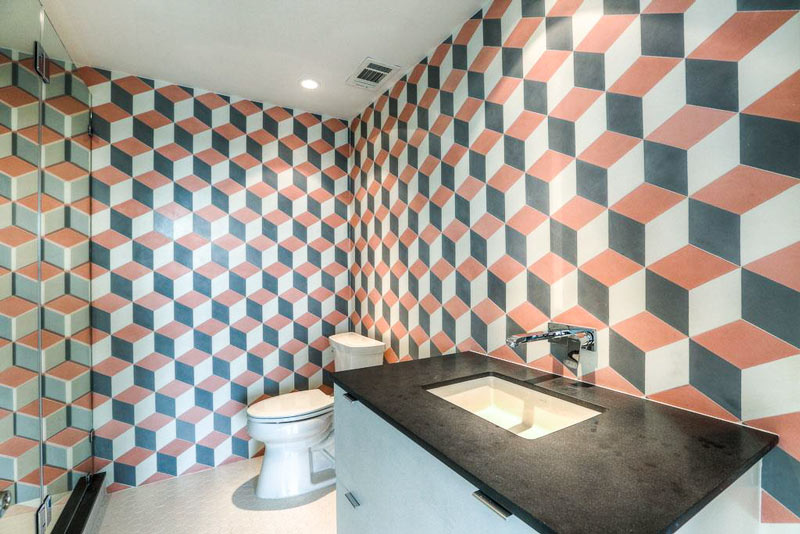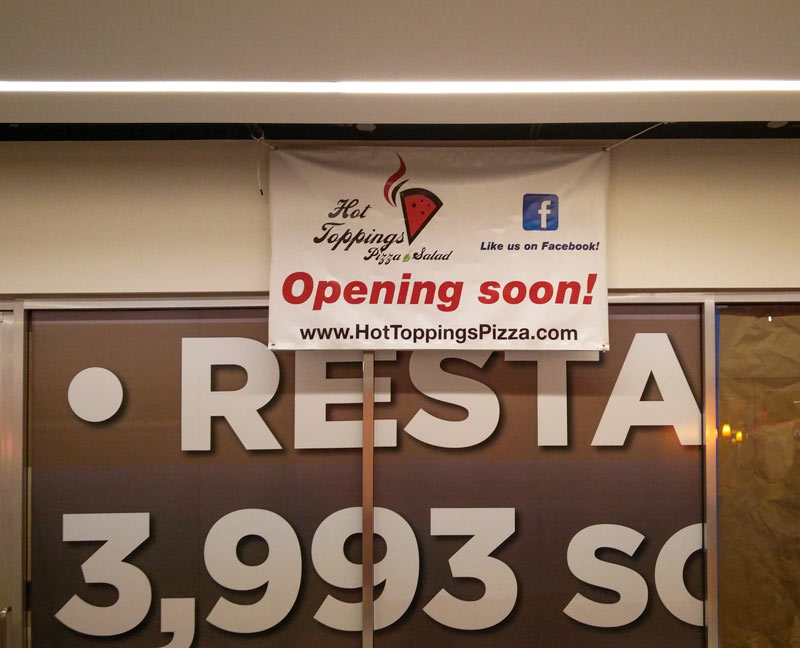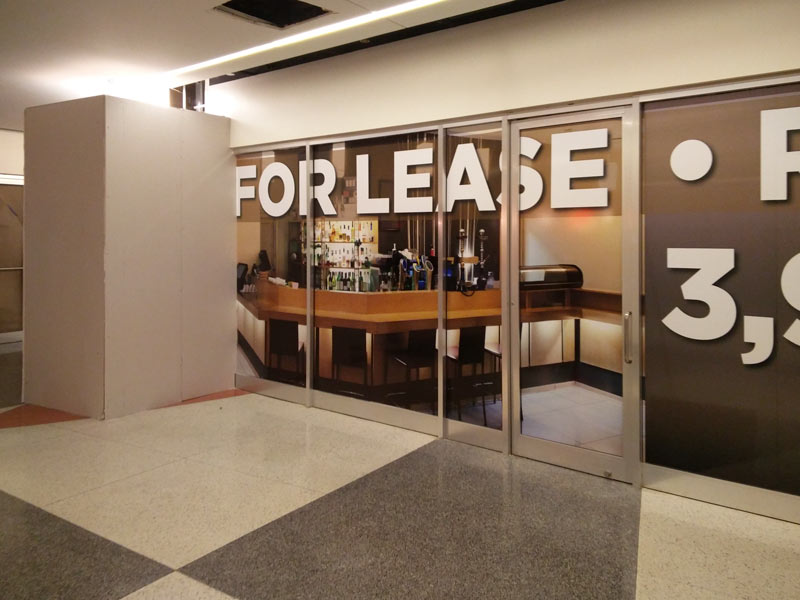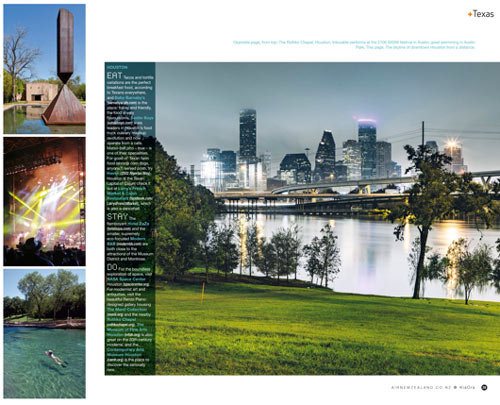
The glossed-up scene above, which shows a pushing-its-limits White Oak Bayou flirting with the lower edge of the Height Hike and Bike Trail bridge, made an appearance in this month’s edition of Kia Ora, Air New Zealand’s in-flight magazine. A sky-high peruser on Reddit noticed the article, which is currently employing the flood photo to promote Houston and several other Texas cities as tourist destinations. The original source looks to be a Getty Images contributor who captioned the shot (along with another expansively aquatic view from 2015) as stock images of Downtown Houston in the rain. For comparison with the normal scenic view of Downtown’s northernmost freeway tangle, below is a recent shot of that trail construction near the Leonel Castillo Community Center, which caught the same angle and foliage (minus the high water, but plus some heavy equipment):


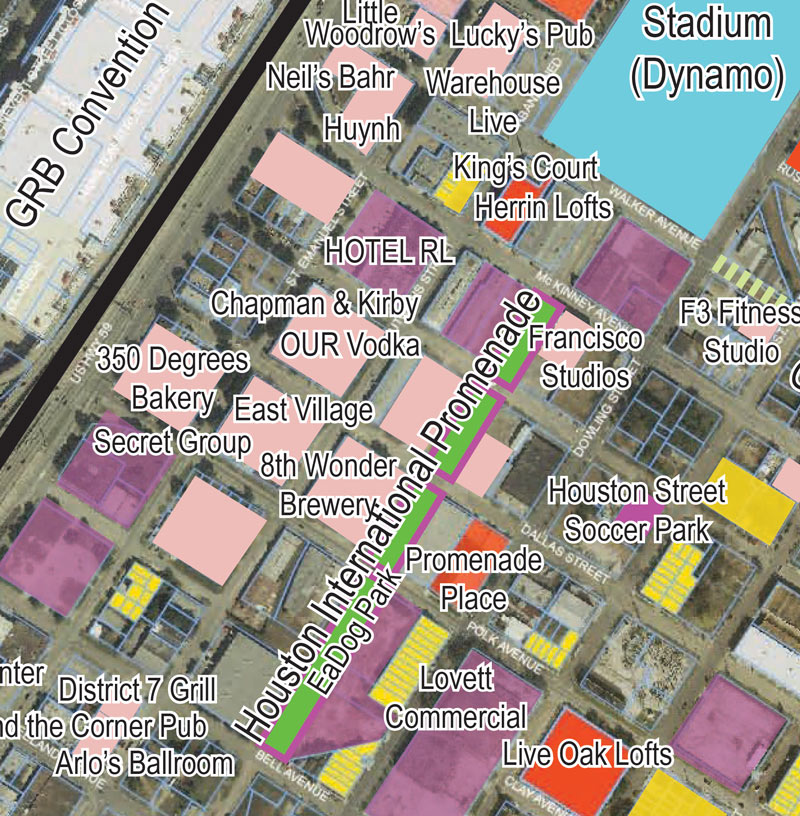
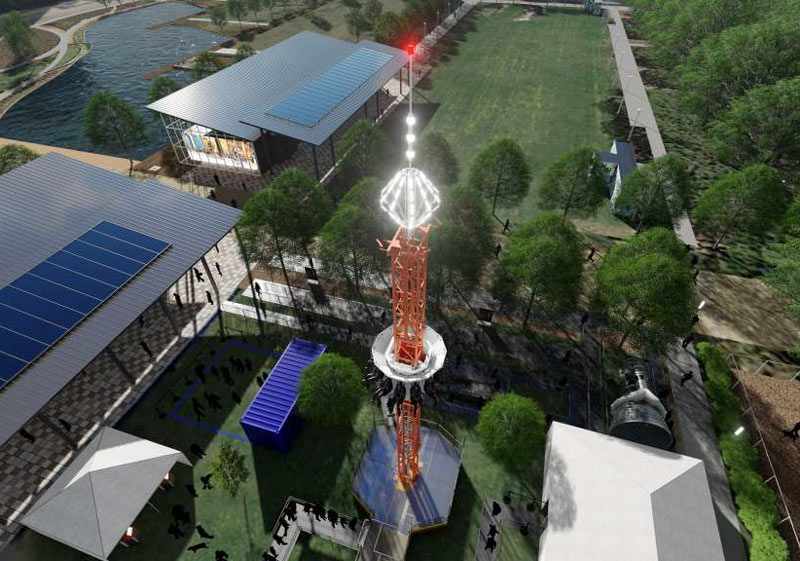
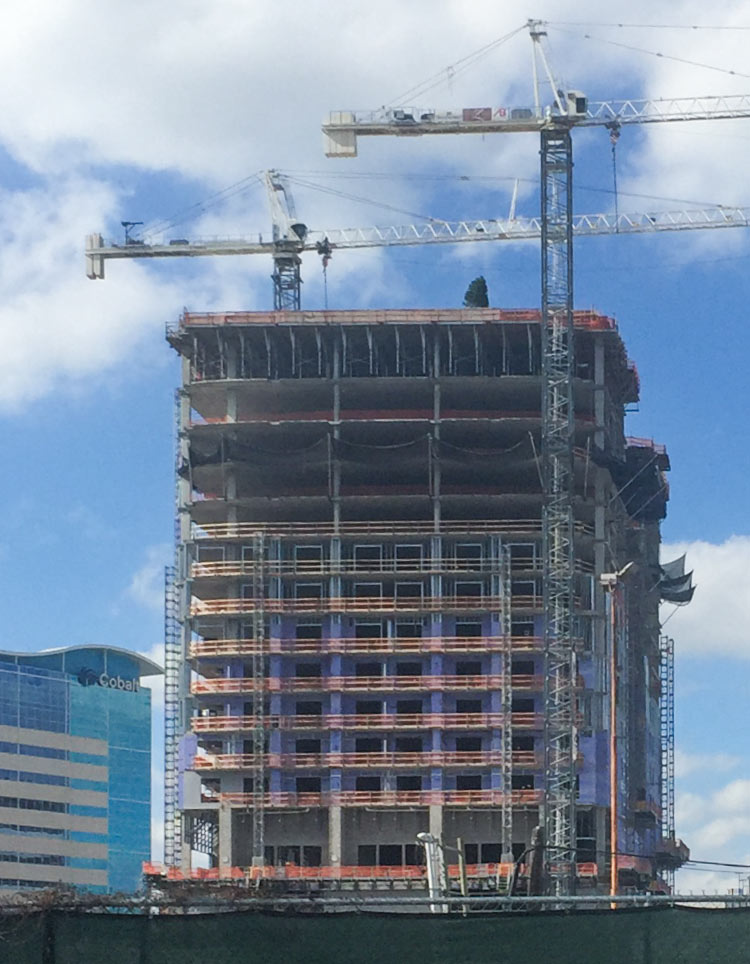

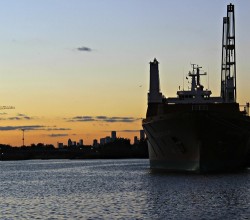 “
“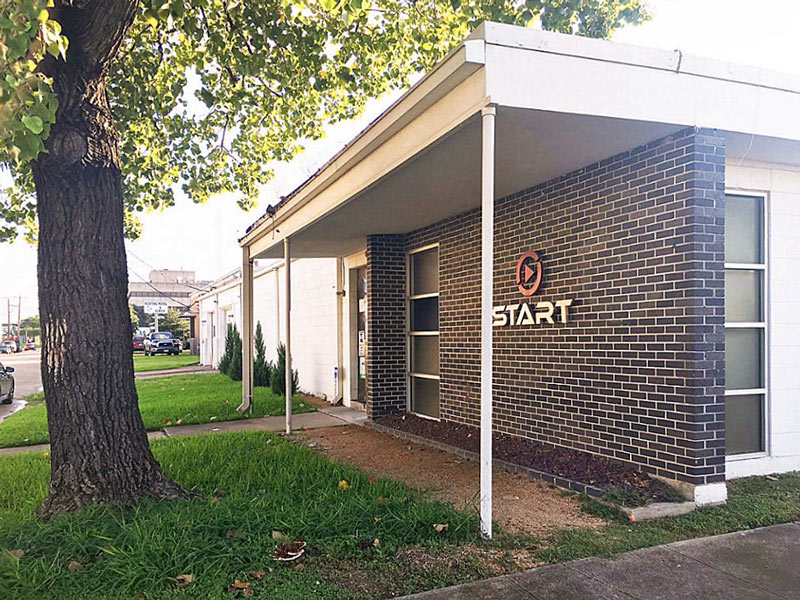
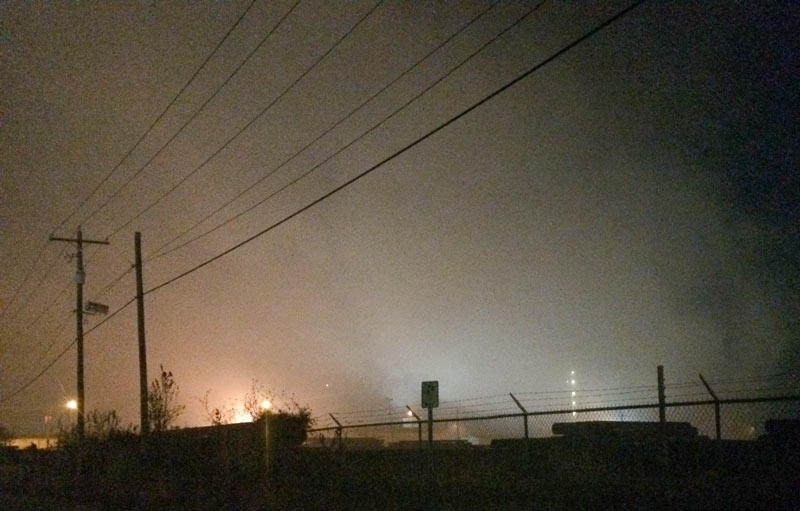

 “I have 3 words that explain why Chicago developed as a ‘modern city’ well before Houston: ‘winter’ and ‘air conditioning.’ Think about it . . . Heating a big tall building to make it comfortable is easy. In contrast, cooling that same building is not so easy — especially in the post Civil War and 1890-1920 time frame. Now, the development of commercially viable air conditioners in the 1920-30’s was an expensive luxury. Then the WW2 years and rationing, and voilá — [only] modest growth of ‘big city’ until the late 1940’s and 1950’s. So when did Houston really start to grow? Yup, you guessed it: post WW2 and the 1950’s, when most middle class people could afford air conditioning in their homes and businesses. So if you want cool ‘old’ pre-war buildings, go north and east towards cooler weather. But if you want a modern or post-modern or even contemporary building, just look at Houston, or Atlanta, or Los Angeles, or Las Vegas. (And thank
“I have 3 words that explain why Chicago developed as a ‘modern city’ well before Houston: ‘winter’ and ‘air conditioning.’ Think about it . . . Heating a big tall building to make it comfortable is easy. In contrast, cooling that same building is not so easy — especially in the post Civil War and 1890-1920 time frame. Now, the development of commercially viable air conditioners in the 1920-30’s was an expensive luxury. Then the WW2 years and rationing, and voilá — [only] modest growth of ‘big city’ until the late 1940’s and 1950’s. So when did Houston really start to grow? Yup, you guessed it: post WW2 and the 1950’s, when most middle class people could afford air conditioning in their homes and businesses. So if you want cool ‘old’ pre-war buildings, go north and east towards cooler weather. But if you want a modern or post-modern or even contemporary building, just look at Houston, or Atlanta, or Los Angeles, or Las Vegas. (And thank 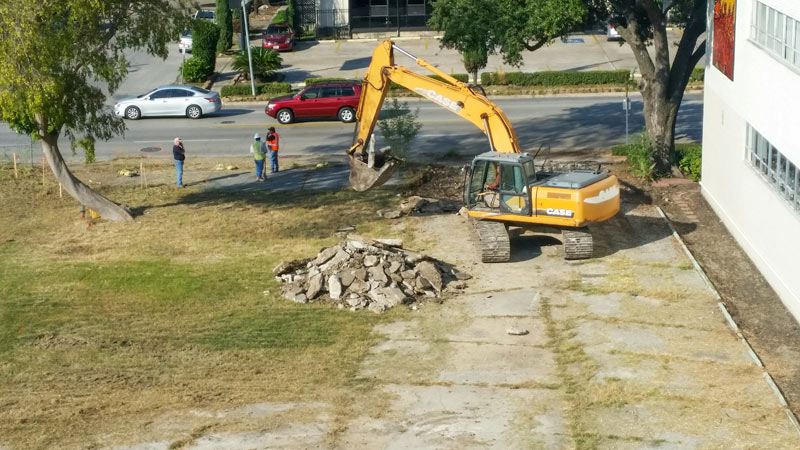
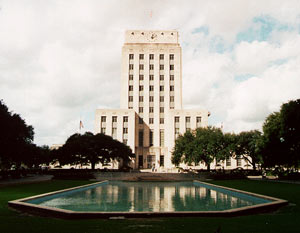 The city is planning to check in on the water at other buildings downtown, Scott Noll reports, in the wake of those lead tests KHOU did on drinking water from just City Hall and the City Hall Annex buildings last week. Those tests turned up lead levels so high above federal limits in at least 1 fountain that the city has shut them all off (andÂ
The city is planning to check in on the water at other buildings downtown, Scott Noll reports, in the wake of those lead tests KHOU did on drinking water from just City Hall and the City Hall Annex buildings last week. Those tests turned up lead levels so high above federal limits in at least 1 fountain that the city has shut them all off (and 